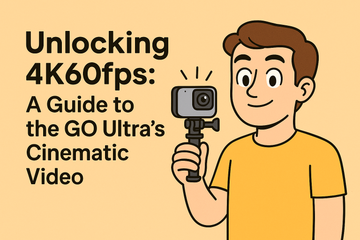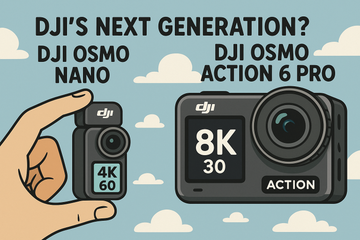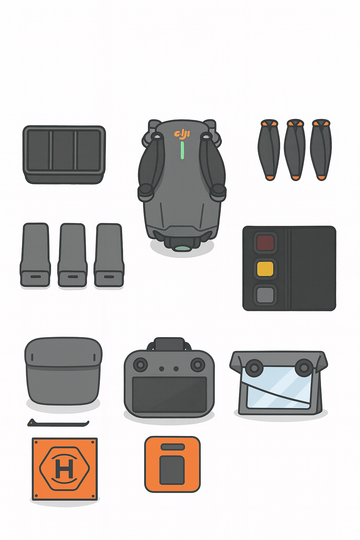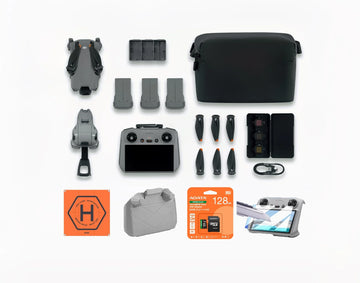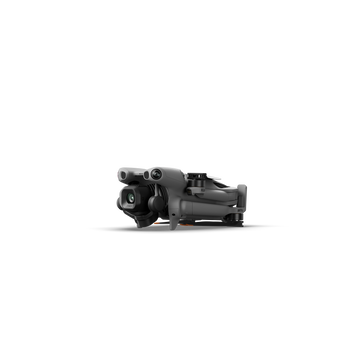Why 4K60fps matters
-
Smoother motion: 60 unique frames each second = fewer motion artifacts during fast action (cycling, skiing, driving).
-
Clean slow-downs: Retime 60→30fps (50%) or 60→24fps (40%) for natural slo-mo without choppiness.
-
Sharper per-frame detail: More temporal samples help stabilization and AI denoise retain texture.
When not to use it: In extreme low light, 60fps forces faster shutter speeds and higher ISO. Switch to 30/24p (or Pure Video mode) for cleaner night results.
The cinematic recipe (quick start)
-
Mode: 4K60, Standard color
-
Shutter: Aim for the 180° rule (1/120s at 60fps) for natural motion blur
-
ISO: Cap at 800–1600 (day) / 1600–3200 (night with caution)
-
White balance: Lock (e.g., 5500K daylight) to prevent shifts
-
Stabilization: FlowState on; consider Horizon Lock for POV
-
Lens/FOV: Mega or Wide; use Dewarp if you want straighter lines
-
ND filter: ND8–ND32 in bright sun to hold 1/120s without overexposure
-
Audio: External/Bluetooth mic if you’re vlogging or mounting away from subject
Recommended settings by scenario
| Scenario | Frame Rate | Shutter Target | Notes |
|---|---|---|---|
| Bright action (bike, ski, motorsport) | 4K60 | ~1/120s | Use ND to control shutter; Horizon Lock for POV |
| Travel/vlog daytime | 4K60 | ~1/120s | Lock WB; Dewarp for straighter lines |
| Golden hour | 4K60 | ~1/120s | ND may be unnecessary; keep ISO ≤1600 |
| Night/indoors | 4K30 or Pure Video | ~1/60s | 60fps can look noisy; Pure Video tops at 4K30 |
| Slow cinematic b-roll | 4K60 capture → 30/24p timeline | ~1/120s | Retime to 50–40% for smooth slo-mo |
Heads-up: Active HDR is limited to 4K30. For 4K60 in high-contrast scenes, expose for highlights and grade in post.
Gear & workflow that make 4K60 shine
-
ND filters: Essential for the 180° shutter rule in sunlight (start ND16).
-
Aqua Lens (underwater): Swap before water; the stock dome looks soft underwater.
-
Storage: U3/V30 microSD (128–512GB). 4K60 eats space.
-
Power: Fast charge between takes (0–80% quickly); carry a PD power bank.
-
Mounting: Pendant for chest POV; helmet/bike mounts for action; use the safety tether.
Capture → edit → export (simple, clean pipeline)
-
Capture: 4K60 with locked WB; keep horizon tools consistent across clips.
-
Ingest: Use the Insta360 app/Studio to apply FlowState and lens corrections before editing.
-
Color: No Log profile—keep exposure conservative to protect highlights; subtle contrast/sat tweaks go far.
-
Retiming: Slow 60→30 (50%) or 60→24 (40%) for cinematic slows without optical flow artifacts.
-
Export:
-
Long-form: 4K 30p (or 24p), high bitrate (80–120 Mbps if your platform supports).
-
Shorts/Reels: 4K60 vertical for crisp motion; add captions/b-roll overlays.
-
Common pitfalls (and fixes)
-
Stuttery motion at 60p: Shutter too fast (e.g., 1/1000s). Add ND; target 1/120s.
-
Noisy night footage: Drop to 30/24p or Pure Video; keep ISO caps modest.
-
Color shifts between shots: Lock WB; avoid Auto.
-
Warped horizons: Re-mount squarely or enable Horizon Lock.
-
Underwater softness: Use Aqua Lens (swap before water).
Who should shoot 4K60?
-
POV/action creators who want crisp motion and flexible slow-downs.
-
Travel vloggers who prefer to capture everything once and choose slow-mo in post.
-
Editors building 30/24p timelines but wanting 60p source for dynamic ramping.
Keywords
Insta360 GO Ultra 4K60 guide, GO Ultra cinematic settings, best settings Insta360 4K60, 180 degree shutter action camera, Insta360 ND filter guide, GO Ultra Pure Video low light, Insta360 horizon lock, 4K60 slow motion tutorial, Insta360 export settings, Insta360 underwater Aqua Lens
Hashtags
#SpeedyDrone #Insta360 #GOUltra #4K60 #ActionCamera #POV #CinematicVideo #NDfilters #Stabilization #CreatorTips


